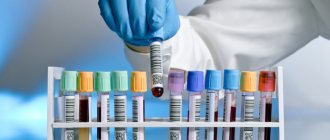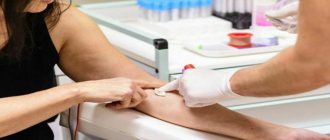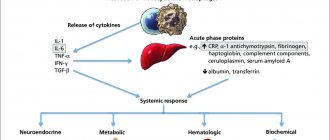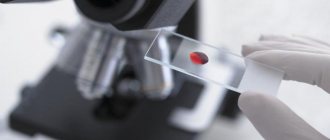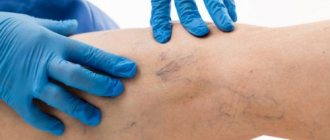Itching in diabetes mellitus is caused by high glucose levels, microbes, and fungi. It occurs due to damage to blood vessels, nerve fibers, and the skin itself. Typical places are the genitals, perineum, scalp, eyelids, legs. You can get rid of itching after normalization of glucose. You need a diet, medications, but ointments and folk remedies only act for a short time. It is important to maintain cleanliness and moisturize the skin for prevention.
Why does your body itch when you have diabetes?
In diabetes mellitus, the body itches due to:
- high glucose levels;
- vascular complications;
- addition of infection;
- taking medications.
Increased glucose
Body itching is one of the first things to appear when your blood sugar levels are high. Moreover, it can occur long before the main signs (thirst, excessive urination, weight change), and it also happens with hidden diabetes.
Explained:
- irritation of nerve fibers;
- the formation of substances due to improper metabolism;
- changes in the properties of proteins (strong bond with glucose).
We recommend reading the article about diabetes rashes. From it you will learn about the causes of diabetic rashes in adults and children, why the rash and itching appeared, as well as the treatment of diabetic rashes.
And here is more information about inflammation in diabetes mellitus.
Complications of diabetes
With a long course of the disease, insufficient treatment, non-compliance with the diet, skin itching is caused by complications:
- angiopathy - decreased patency of arteries, small capillaries, deterioration of blood flow;
- neuropathy – destruction of nerve fibers, skin sensitivity changes;
- dermopathy – specific rashes, dryness, peeling;
- nephropathy - damage to the blood vessels of the kidneys, persistent itching is caused by the accumulation of toxins.
Accession of infection
One of the reasons why a diabetic's skin itches is infection. Due to weak protection, germs easily penetrate. This is accompanied by redness and rashes. Due to scratching, the infection process quickly spreads to large areas.
High blood sugar and its appearance in the urine serve as an excellent breeding ground for candida fungus. Persistent thrush and itching of the perineum are some of the early signs of diabetes, which are often diagnosed.
Use of medications
Any drug used to lower blood sugar can cause itching. The reaction can be local to insulin administration or widespread. It often disappears after 3-5 days. If persistent itching is accompanied by blisters and rashes of itchy spots on the body, then a change in medication is recommended.
Itching in the eye area
In order not to experience discomfort in the eyes, it is necessary to prevent drying out of the mucous membrane. This is achieved through fat secretion. With diabetes, this indicator decreases and leads to vulnerability of the visual organ.
The membrane of the eyes is vulnerable and is unable to regulate the process of hydration and fluid retention. This leads to dryness, irritation, and decreased immunity to infections coming from the external environment. Visual acuity decreases and a constant burning sensation appears. A consultation with an ophthalmologist will identify the cause of the disease and prescribe medications to reduce itching.
Itching in diabetes mellitus in women
In women with diabetes, itching in the genital area is provoked by several factors:
- candidiasis (thrush),
- bacterial vaginosis,
- dry mucous membranes.
Candidiasis
It is the most common infection of the genital organs. Itching and burning in diabetes are provoked by:
- high blood sugar, its excretion in the urine;
- decreased immunity;
- treatment with antibiotics, hormones, taking birth control pills;
- pregnancy;
- external contraception - spermicides (destroy sperm) contained in gels, suppositories, and condoms;
- fragrances in pads, gels;
- insufficient adherence to intimate hygiene after sexual intercourse and visits to the toilet;
- too frequent washing with aggressive detergents, intimate deodorants, douching;
- salts, bath foams, washing powder, fabric softeners;
- compression underwear, made of synthetic materials, thongs.
Vaginal candidiasis
Signs of thrush:
- itches in the vaginal and perineal area;
- tingling, swelling of the mucous membranes;
- discharge is white, thick, cheesy with the smell of sour milk;
- pain during urination and sexual intercourse.
Bacterial vaginosis
With high blood sugar, the composition of the microflora changes, the number of bacteria producing lactic acid decreases. Microbes multiply and cause inflammation. Risk factors:
- frequent change of partners;
- unprotected sex;
- smoking;
- low immunity;
- the use of drugs with an antibacterial effect, lubricants, suppositories with nonoxynol (for example, Patentex).
The main symptom of vaginosis is discharge with a fishy odor..
Vaginal dryness
The most common cause is decreased ovarian function. This happens with the onset of menopause, premature depletion of the gonads. Dryness causes itching and microcracks in the mucous membrane. In diabetics, the situation is aggravated by irritation from urine containing high glucose levels.
Helminthiasis and proctological pathologies
The occurrence of body itching in diabetes mellitus may be due to helminthic infestation. In this case, the patient may itch the anus and perineum. Rashes appear on the skin.
New information: Numbness of the legs in type 2 diabetes: treatment and diagnosis
A feature of helminth infections is the fact that itching in the buttocks area intensifies at night. This is due to the fact that some parasites lay eggs at night and crawl out. Helminthiases are also accompanied by diarrhea or constipation, fever, cramps, and muscle pain.
Broad- or narrow-spectrum antihelminthics help to cope with parasitic diseases. The tablets commonly used are Vermox, Decaris, Mebendazole, Albendazole, and Pyrantel. You can supplement your treatment with folk remedies, for example, tincture of garlic, pumpkin seeds, or wormwood infusion. Eliminating helminths helps relieve itching and other clinical manifestations.
The anus can also itch due to diseases such as:
- Haemorrhoids. The disease is accompanied by bloody discharge from the intestinal mucosa, pain, a feeling of heaviness when walking, stool disturbances, itching, burning, and in severe cases, rectal prolapse. The disease is treated conservatively or surgically, depending on the severity.
- Proctitis. The disease is accompanied by pain in the anal canal, chills, bleeding from the rectum, constipation or diarrhea. The disease is treated primarily surgically.
- Rectal fissure. Characteristic symptoms are pain in the anal canal, bleeding from the anus, constipation, itching and burning. You can fight anal fissures through conservative therapy and diet. If the disease becomes chronic, surgical treatment methods are used.
- Irritable bowel syndrome accompanied by chronic diarrhea. The disease is characterized by itching and burning in the anus, bloating, flatulence, and abdominal pain. IBS is treated conservatively with antispasmodics, antidiarrheals and probiotics. The patient is also prescribed a diet.
For the above proctological ailments, diabetics can also use folk remedies.
Baths with chamomile, oak bark and calendula help relieve itching and other clinical manifestations of diseases. Potato suppositories can help with hemorrhoids.
Itching in diabetes mellitus in men
In diabetes mellitus in men, itching is caused by specific skin lesions (diabetic dermopathy), as well as a number of persistent skin diseases. They provoke their development:
- frequent fluctuations in blood glucose;
- diet violation;
- neglect of glucose and cholesterol control;
- alcohol abuse;
- smoking.
Itching with high blood sugar becomes painful and worsens at night. Typical for diabetics are:
- collagenosis - rash of nodules with a dense plug in the center, combined with impaired renal function, excess uric acid in the blood;
- diabetic bladder – blisters with clear or bloody contents suddenly appear in the area of the feet, characteristic of neuropathy, which can develop into a chronic ulcer;
- acanthosis nigricans - dark (brown or black) plaques on the folds of the neck and under the armpit, usually found in obese patients with type 2 of the disease;
- lichen planus - itchy nodules appear near the wrist, ankle, in the oral cavity, damage to the liver and intestines, and immunity disorders are detected;
- eruptive xanthomas - with excess cholesterol and alcohol consumption, small yellowish lumps appear on a red background in the area of the buttocks, elbows, and knees;
- chronic skin infections - persistent furunculosis, pustular rash on the skin of the face, scalp, are characteristic of improper control of diabetes, in men they worsen after shaving;
- papillomas are a thin outgrowth of skin on a stalk of normal or dark color, they occur on the neck, under the armpit, on the eyelid, in the groin and penis; they occur 4 times more often in diabetics than in other people; they grow profusely when blood sugar rises.
Acanthosis nigricans
The presence of any of these changes is an indication for an in-depth examination; patients are often diagnosed with diabetes, which they did not previously suspect.
Causes
Like any other unpleasant symptom of diabetes, itching is a consequence of carbohydrate metabolism disorders. Why does it arise? The skin itches due to elevated blood sugar levels, and when it normalizes, the discomfort usually goes away. The immediate causes of itching in diabetics may be:
- insufficient removal of metabolic end products from the body (increased sugar levels lead to problems with the kidneys and sweating, so the skin dries out, cracks and itches a lot);
- the development of a fungal, bacterial or viral infection on the skin due to a decline in the body’s defenses;
- dermatological diseases that occur as a side effect of certain antidiabetic medications (urticaria, erythema, blistering skin rashes).
Due to diabetes, blood vessels become clogged and do not deliver sufficient nutrients and moisture to the skin and mucous membranes. Therefore, there is a decrease in elasticity, tone and drying out of these structures of the human body. Most often, itching occurs in the groin, skin folds and knees, although it can also occur in any anatomical area.
Diabetics are better off using hygiene products with a neutral pH, since regular soap is very drying to the skin.
Why do your feet itch if you have diabetes?
About 15% of diabetics have itchy feet due to damage to the nerve endings - neuropathy. The skin may not be changed, but more often they find:
- dryness, flaking;
- thickening in the foot area;
- cracks;
- spots with clear outlines on the lower leg with wrinkling in the center.
It has been established that itching of the legs and skin changes are the first sign of damage to the blood vessels of the heart, kidneys and fundus. Therefore, skin manifestations of diabetes are considered an indicator of vascular complications.
Accompanying illnesses
Itching or rashes on the body in various places with “sugar disease” can develop into skin diseases, which are classified into 3 large groups:
- itching appears due to poor removal of harmful substances (slags and toxins) from the body;
- problems arise due to failure to take emergency measures at the first appearance of the rash, the result may be inflammation of the skin and suppuration;
- Discomfort and unpleasant sensations may occur when a patient takes medications that lower blood sugar levels.
Each disease has its own distinctive signs, and in each case individual treatment is selected, since there is no universal remedy. You should not self-medicate. If you notice itching or flaking of the skin, you should consult a therapist and dermatologist . If necessary, they will issue a referral for additional studies and tests.
If fluid-filled blisters and red spots appear all over the body, this is dermatopathy . There is no treatment with medications.
When yellow spots appear on the bends of the legs and arms due to a violation of fat metabolism, this is a xanthoma . Fat ointment will improve the level of fat on the skin and relieve irritation.
When an itchy rash is constantly present on the legs, arms, and body, this is neurodermatitis . To relieve itching, ointments based on Dermosolone, Prednisolone, and Flucinar are used.
Constantly itchy lumps on the neck, back, legs that crack at the slightest movement or scratching are scleroderma . To soften thickenings, you can use softening and moisturizing creams and ointments.
Avoiding direct sunlight on itchy areas will prevent irritation of sore skin areas, and the best prevention of itching is personal hygiene and regular visits to the doctor.
Diabetes and itching in intimate places
Diabetes causes itching in intimate places - in the perineum, genital area. Often, burning sensations and irritation become stronger in the evening and at night, which disrupts sleep. When it lasts for a long time, the skin becomes covered with scratches and abrasions. In diabetics, genital itching leads to:
- development of bacteria, fungi;
- eczema – constant inflammation with burning and peeling of the surface layer (erosion);
- the formation of ulcers;
- bleeding.
If an intimate place itches, then women should consult a gynecologist, and men should visit a urologist or proctologist, since it is possible that they have:
- sexually transmitted diseases;
- proctitis (inflammation of the rectum), fissures;
- pretumor and tumor diseases.
Burning and itching in women
With prolonged and persistent itching of the skin in the area of the genital private parts, shoulder blades, buttocks, and abdomen of a woman, the doctor can diagnose angiopathy, which is accompanied by damage to the smallest blood vessels - arterioles and capillaries.
This disease disrupts the blood supply to the mucous membranes and blocks the flow of vital nutrients to the internal organs. As the disease progresses, a woman experiences peeling and dry skin, and microcracks are found on the skin and mucous membranes.
Local immune and protective functions also decrease, the acid-base balance of the skin changes, which negatively affects the general condition of the diabetic. Microcracks appear on dry and thinned membranes, causing itching and burning to intensify. Fungi and pus-like organisms enter the wounds, which leads to the development of an inflammatory reaction.
- Often women with diabetes experience discomfort in the perineum, pubis, vulva and vagina. The disease also causes itching in the ears, on the skin of the lower extremities, under the breasts, on the inner thigh, in the fat folds with increased sweating, in the armpits, around the shoulder blades and below.
- The body begins to itch as a result of disruption of the smallest blood vessels. Microangiopathy provokes a malfunction of the kidneys, resulting in the development of nephropathy. After some time, a person’s vision may become impaired and retinopathy may develop.
- As a rule, the skin begins to react to such changes in the body first. It begins to dry, peel, itch, and in this state it is not able to fully protect the subcutaneous tissue from the effects of pathogenic microorganisms.
Feeling severe itching and burning, the woman scratches the skin until wounds form, as a result, the bubbles with liquid burst and unbearable pain appears. Later, new blisters mature on the skin, dry out and become covered with a thick crust. Such crusts are very itchy, but under no circumstances should you peel them off yourself. Otherwise, the new wound becomes a source of infection and irritation.
With diabetes, it is important to know how to treat skin diseases in order to provide timely assistance to a diabetic. Otherwise, purulent abscesses, fungi and viruses lead to serious complications that are very difficult to treat.
In addition to normalizing blood sugar levels, a woman must undergo additional tests to ensure that she does not have an allergic reaction to the foods and medications she consumes.
Vitiligo is treated with hormonal therapy, and the woman is also advised to stay in the shade, away from direct sunlight, so that the discolored skin is not exposed to ultraviolet radiation. If damaged skin comes into contact with the sun, irritation may develop.
- In the case of type 2 diabetes, treatment consists of following a therapeutic diet. If burning and itching in a woman’s genitals occurs due to the use of medicinal glucose-lowering drugs, a similar drug should be selected that does not cause an allergic reaction.
- Women will quickly get rid of discomfort in the intimate area if they additionally take vaginal tablets that contain the active substance clotrimazole. You can relieve irritation on the mucous surface of the genital organs with the help of Fluomizin; this drug is the second most popular and effective.
- If irritation and inflammation develop on the skin, well-known folk remedies in the form of decoctions, lotions and douching of the genitals are recommended. They will help quickly relieve itching in women with diabetes.
Chamomile, calendula, oak bark, celandine, a weak solution of potassium permanganate, and furatsilin are very suitable for skin care.
Reasons why your head itches when you have diabetes
In diabetes, the head itches due to:
- formation of crusts - seborrhea, the fungi that cause it are normally present on the skin, but with good immunity and proper metabolism they are inactive;
- allergic reaction to cosmetics, especially often the cause is lauryl sulfate;
- violation of skin innervation, neuropathy.
In many patients, it is impossible to determine the factors causing persistent scalp itching. It can become stronger due to stress, infections and diet disorders - eating sweet and flour products, spicy foods, fatty and fried foods.
Seborrhea on the head
Skin diseases in diabetes
Skin problems can be caused by various dermatoses, of which there are about 30 types. They are conventionally divided into three groups:
- primary - occur when the circulatory system is affected: rubeosis, fatty necrobiosis, dermatopathy, xanthoma, etc.;
- secondary – occurs when infection and bacteria enter;
- medicinal – due to taking hypoglycemic drugs: eczema, fatty degeneration, urticaria, etc.
To choose the right treatment, it is very important to pay attention to the accompanying symptoms, such as rash, burning, peeling, hair loss in this area of the body, as well as the formation of wounds and cracks.
It is very important for any skin rash or itching of the skin to conduct regular examination of the axillary and elbow areas. Inspect the genital area.
After all, these places are the most favorable environment for the development of fungus.
The frequency of itching is also important. When the body constantly itches, symptoms such as irritability, insomnia, soreness and hypersensitivity of the skin may appear.
Therefore, you should not self-medicate, but it is better to immediately contact a dermatologist, who, if necessary, can prescribe a consultation with an immunologist, endocrinologist or allergist.
Diseases that can cause severe itching, in addition to the presence of type 2 diabetes, are:
- neurodermatitis is a chronic disease of the immune and nervous systems that appears against the background of allergies;
- xerosis – excessive dryness of the skin.
- neurasthenia is a mental illness when itching occurs against a background of irritability, disturbances of consciousness and obsessions;
- hemorrhoids - itching localized in the anus with a strong burning sensation;
- parasitic infections – when infected with any parasites;
- pediculosis - a symptom is itching of the head (with the appearance of lice) or itching in intimate places (pubic lice);
- oncology - about 3% of cancer types have itchy skin as a symptom.
Itching is not a separate disease. This is the first sign of any pathology.
And you need to urgently contact a specialist if:
- against the background of itching, pustular wounds and rashes appeared;
- high temperature rose;
- itching is accompanied by swelling;
- behavior has changed or mental disorder occurs;
- difficulty breathing or signs of anaphylactic shock.
Itchy skin in type 2 diabetes
Additional aggravating factors for itchy skin in type 2 diabetes include:
- obesity;
- increased sweating;
- tendency to furunculosis and pustular rash.
Typical skin lesions:
- folds under the abdomen, mammary glands;
- armpits;
- crotch;
- interdigital spaces.
For older patients with type 2 diabetes, the cause is dry and flaky skin on the feet and legs. Constant itching of the palms and feet is the first sign to suspect diabetes.
Why do my eyes itch?
Eyes itch due to:
- damage from a viral infection (herpes, measles);
- allergic reaction to cosmetics, dust, food, medicines, animal hair, plant pollen;
- exposure to cold, sun;
- changes in the properties of sebum secreted by glands near the eyelashes;
- mite infestation (demodex).
Predisposing factors include: poor hygiene, touching eyelids with dirty hands, and elderly patients.
Symptoms of itching in diabetes mellitus
Common symptoms of itching in diabetes include:
- skin redness;
- traces of scratching;
- rashes;
- dryness, flaking;
- damage to the top layer (erosion);
- long-term healing of cracks and microtraumas of the skin;
- infection, suppuration;
- lack of effect from treatment with conventional external means;
- typical localization - skin folds, lower extremities, scalp, intimate areas, eyelids;
- improvement of the condition after normalization of blood sugar levels.
Types and symptoms of itching
Itchy skin lesions can be of several types:
- Tumor-like deposits in the skin of cholesterol or diabetic xanthoma. Develops against the background of metabolic disorders of fat-like substances (lipids). It is characterized by plaque-like yellow spots, most often on the flexural surfaces.
- Erythema. Caused by dilation of capillaries due to excess blood flow. It looks like redness with clear boundaries.
- Diabetic blisters. They occur against the background of fungal infections and other skin lesions of the upper and lower extremities. The bubbles, bounded by walls, are filled with liquid and have different sizes.
- Scleroderma. Thickening of connective tissue, localized most often on the back and neck.
Diabetic blisters most often appear as a result of improper or uncontrolled treatment of the disease
. According to the time of occurrence, the types of skin diseases that develop against the background of diabetes mellitus are classified: initial or primary (the category includes: diabetic blisters, xanthomatosis or xanthoma (cholesterol deposits), pyodermic or secondary. The latter appear due to an infection caused by scratches on the skin. This can be suppuration or infectious diseases caused by bacteria and viruses that have entered the body.
Associated symptoms include:
- dry skin and impaired desquamation (sloughing) of dead skin cells;
- dysania (sleep disorder);
- dandruff;
- unmotivated irritability.
Important! If symptoms of itching and burning appear, you should inform your doctor.
What is the danger of itching for diabetics?
The patients' skin is easily vulnerable; due to sensitivity disorders, the resulting damage after scratching is not felt. Their healing is difficult. A wound that is open for a long time is dangerous:
- suppuration;
- formation of diabetic ulcers;
- worsening diabetes mellitus, increased need for insulin;
- the spread of pus throughout the body, the development of sepsis (blood poisoning).
Skin defects on the feet and legs due to poor blood circulation can cause tissue necrosis; if left untreated, gangrene with amputation of part of the leg is likely.
Watch the video about itching in the intimate area with diabetes:
What diseases of the genitourinary system cause itching?
Itching in women with diabetes mellitus often occurs due to thrush. The causative agent of the disease is the Candida fungus. By the way, the microorganism is opportunistic, that is, almost every person is a carrier of the fungus.
The growth of Candida can be provoked by vaginal dysbiosis, douching and diseases of the genitourinary system. The disease often progresses in pregnant women, since during pregnancy the intimate microflora is disrupted.
As candidiasis progresses, a woman suffers from severe genital itching, cheesy discharge from the vagina, pain and pain when urinating. Thrush can also occur in diabetic men. In this case, there is redness of the foreskin and glans penis, pain in the groin, pain during urination and sex. There is also a discharge of foul-smelling cheesy masses from the urethra.
How to relieve itching in the intimate area in a woman with diabetes? To get rid of a symptom, you need to eliminate the root cause of its occurrence. Typically, candidiasis is treated with antifungal medications.
New information: Rash due to diabetes mellitus in adults: photos of spots on the lower extremities and on the skin
Tablets or suppositories can be used. The most effective medications are Nystatin, Pimafucin, Fluconazole. You are also required to abstain from sexual intercourse. For intimate hygiene, you should use water with a decoction of chamomile or sage. In men, candidiasis is also treated with antifungal medications.
Genital itching can also be caused by:
- Chlamydia.
- Syphilis.
- Gonorrhea.
- AIDS.
- HIV.
- Ureaplasmosis.
- Trichomoniasis.
How to treat itching in the intimate area in women with diabetes mellitus if there are sexually transmitted diseases? Then antiviral, immunomodulating and antibiotic medications are prescribed. The principle of treatment of sexually transmitted diseases in diabetic men is similar.
By the way, the occurrence of vaginal itching in girls can be caused by vulvitis (inflammation of the vulva), vaginitis, colpitis, vulvovaginitis. In this case, conservative treatment is indicated.
Treatment of itching in diabetes mellitus
In diabetes mellitus, treatment for itching includes diet and medications. In mild cases, folk recipes will help relieve symptoms.
Diet
It is necessary to completely exclude from the diet:
- baked goods, products for diabetics containing white flour, sugar, honey;
- canned food, marinades, pickles, smoked foods;
- products with preservatives, flavors, dyes;
- rice, semolina, sweet cereals, bars;
- curd desserts, yoghurts with fruits;
- bananas, grapes, dates, potatoes;
- spicy, fried and fatty foods;
- nuts, chocolate, citrus fruits;
- spices with pepper, mustard.
Food is prepared from vegetables, cereals, lean meat and fish. Processing methods: steaming or boiling, stewing in water. To improve the taste, you can use herbs and a small amount of lemon juice. If the skin is swollen, the amount of salt should be reduced. For dessert, baked apples, cottage cheese and pumpkin casseroles, jellies and berry mousses are recommended. The sweetener can be stevia or Jerusalem artichoke syrup.
Medicines
You need to start treating itchy skin by normalizing blood sugar. To do this, it is important to select the dose of insulin or tablets so that the indicators are as close to normal as possible. For patients with a purulent process or for severe type 2 diabetes, insulin injections are added to the tablets.
Depending on the origin of the itching, the following are recommended: antibiotics (for example, Flemoxin), antifungal agents (Fluconazole), antiherpes drugs (Acyclovir). In each case, treatment regimens are selected based on the examination results. Self-medication is strictly prohibited.
For allergies, antihistamine tablets (Loratadine, Ketotifen, Suprastin), enterosorbents (Atoxil, Enterosgel) are indicated. If there is neuropathy, then a course of vitamin therapy (Milgamma, Neurorubin) and alpha-lipoic acid (Tiogamma, Espa-lipon), Actovegin helps.
Anti-itch ointment may include the following components:
- antibacterial – Gentamicin, Tetracycline;
- antifungals – Clotrimazole, Terbinafine;
- antihistamines - Fenistil, Irikar, Psilo-balm;
- corticosteroids (strictly under medical supervision in a short course) – Lokoid, Elokom;
- cooling – arnica, tea tree oil;
- anti-inflammatory – calendula extract, Floceta gel;
- non-hormonal antipruritics - Elidel, Protopic.
All external methods help temporarily, the itching resumes if the cause is not eliminated.
Folk remedies
They will relieve the symptoms of itching, but do not eliminate it completely; they cannot be used if there are wounds or ulcers:
- Topically lubricate the skin with lemon juice, a solution of a tablespoon of starch and 100 ml of water;
- sitz baths with herbal decoctions for itching of the perineum (chamomile, chamomile, sage, calendula): 5 tablespoons per 1 liter of boiling water, boil for 15 minutes and pour into warm water;
- applying cold compresses with 2 drops of tea tree oil.
Taking a sitz bath with herbal infusions
How to get rid of discomfort?
Diabetes patients should remember that sugar in the urine plus poor hygiene cause itching in the intimate area, and are also fertile ground for the development of various diseases in this area. In addition to maintaining body cleanliness, special attention should be paid to the selection of underwear. It should be loose, not cause discomfort due to poor quality composition (95-100% cotton).
It is recommended to use neutral or moisturizing cosmetics that do not dry out the skin, but, on the contrary, soften it. The use of detergents with an antiseptic effect should be an exception, only when inflammation or infection develops.
Due to low immunity, diabetics are often plagued by candidiasis. Its characteristic signs are an excessive unbearable burning sensation in the vagina, a specific odor, discharge, redness of the mucous membranes, discomfort and discomfort.
If papillomas appear on the genitals, it is most likely herpes. In all these cases, there is appropriate treatment, which consists of using various ointments for itching and other medications. It can only be determined and prescribed by a doctor, gynecologist or dermatologist. You need to turn to him for help in a timely manner.
In addition to performing symptomatic therapy, it is necessary to remember the factors that in this case led to such a condition. The main cause of itching and damage to the skin (mucous membranes) in diabetes is unstable blood glucose levels. Only by taking all the necessary measures to solve this problem can a sustainable therapeutic effect be achieved in eliminating skin and mucous discomfort.





